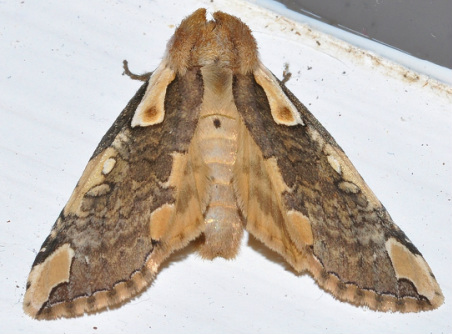 Among the plethora of the spring flying moths, Euthyatira pudens stands out as one of the flashier. The coppery fringe is quite spectacular. As the English name suggests, the larvae prefer to feed on flowering dogwood, but will occasionally feed on oaks and other Cornus species. They range across much of North America - most resources say southern Canada, but they do appear in a checklist of Alaskan moths! Pudens means bashful or modest, not sure how this flashy species got that moniker! 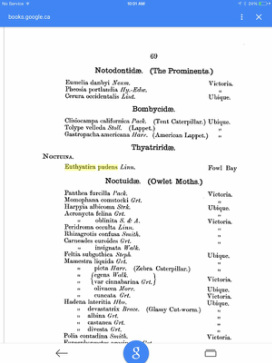 "A Preliminary Catalogue of the collection of Natural History and Ethnology in the Provincial Museum, Victoria, British Columbia" , 1888 (or 1898?), lists this a specimen that had been collected in "Fowl Bay". I assumed that it was just an old name for Foul Bay in Victoria; but apparently Foul is the original spelling. This from Curious Victoria Street Names: "The origin of the name rests with Capt. George Vancouver who surveyed much of the waters around Vancouver Island in the 1790s. On his survey chart of this particular bay he marked it ‘Foul Bay’ because an anchor would not hold bottom so it was a foul anchorage for ships. The name persisted and was transferred to the British Admiralty Chart 577 in 1864, and was formally adopted in 1924." Mostly I got lost in a volume that lists all of the natural history collections at the museum at that time and imagining the natural historians in the field and the curators preparing and cataloging. Today one goes to the online search tool with the jillion (and that is not all of them!) specimens in the collection.
0 Comments
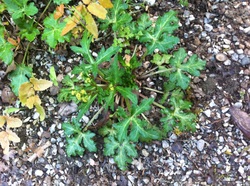 Pacific Sanicle ( Sanicula crassicaulis var. crassicaulis ) is a very common plant here at Leaning Oaks. It is a member of the Parsley Family (Apiaceae). Flowers are in small clusters, and are mixtures of bisexual and male only flowers. It is also called Pacific Black Snakeroot. Pacific Sancicle grows in dry woodlands, disturbed areas and the meadow here at Leaning Oaks. The seeds are borne in clusters and are covered in curving prickles which enable the seeds to stick well to socks and sweaters. 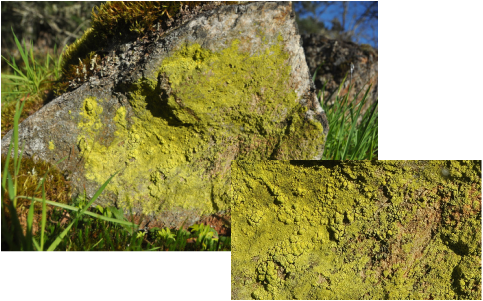 When you see this rock in the meadow with a bright, almost florescent yellow dusting, you couldn't be blamed for thinking that a vandal had come along with spray paint. There are a number of species of brightish yellow lichens that occur on rocks, but this one seems to fit Caloplaca citrina. C. citrina is found from Alaska to California and can be on a coastal rocks as well as dry land. 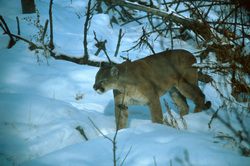 We only know of 3 instances of cougars (Puma concolor) occurring at Leaning Oaks, although we suspect they pass through our property more often than we know. The first is a sighting from the previous owners of our property. The second was a single footprint on the top of a pile of soil dumped the from a wheelbarrow the night before. The third record is by far the most fun, when Leah had a female cougar screaming from under our bedroom window one night. Cougar screams are loud and blood curdling at anytime, but particularly so at close range and when you are alone! Click here and choose the clip of a female cougar in heat to get an idea of what Leah heard that night. There are cougar sightings in our neighbourhood almost every year however and Leaning Oaks is frequented by deer daily, so we keep hoping to catch one with our wildlife camera. Vancouver Island has one of the highest densities of cougars in the world with an estimated population of 1200 cats. This photo was not taken at Leaning Oaks - this is a slightly overweight cat from the Calgary Zoo. This largish jumping spider was living beneath a flat of plants that had been sitting in one spot in the garden all winter. The characteristic scuttling and yes, jumping of this member of the Salticidae family got me very excited -these guys do have a huge cute factor. There is only one member of the Genus Evarcha in BC, so we are pretty sure that we got this identified as Evarcha proszynskii; but as always, let us know if we are wrong; or if there are others that this could be. Identifications are humbling! An interesting factoid - the family Salticidae has approximately 5000 known species worldwide, and at that the highest percentage of members of any family of spiders.
 This day flying moth,(Amblyptilia picta) with its long slender wings and legs with spines on it, is the Geranium Plume Moth. The larvae feed on a wide variety of plants, including Shooting Stars. They feed on the foliage and flower buds of their host plant, and also bore into the seedpods and the leaves. The species overwinters as an adult This is a sedge of dry forests here at Leaning Oaks, growing on shallow soils in the interface between our Garry Oak Meadow and the Douglas-fir forest. It is an early spring bloooming sedge, this year blooming mid-March. Anther producing flowers are at the top of the stem (yellowish anthers in the right hand photo here) and the female flowers are on the lower portion of the inflorescence (white stigmas showing on the photo). Unlike most of the grasses on our property, which are introduced species, this is a native plant, found from southern BC to California.
I've always thought of this as a tough, dapper little sedge, quite attractive with it dark flowering bits, however clearly not everyone thinks so, since it has the scientific name Carex inops ssp. inops. Inops is Latin for helpless, destitute, indigent, poor, mean, wretched or contemptible. Poor little sedge. 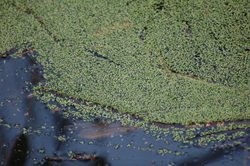 Common Duckweed (Lemna minor) grows on the surface of our pond often blanketing large areas by the end of the summer. It is a floating aquatic plant with 1-3 leaves and a root hanging down into the water. As the leaves grow, they split from one another and become separate plant. Duckweed leaves have aerenchyma which are air pockets that allow them to float. Flowers are tiny, and either we have been unobservant and missed them, or our population reproduces mainly by division. We didn't put Duckweed in our pond, they either hitchhiked in on the plants that we did buy, or arrived here courtesy of the ducks that visit the pond. Common Duckweed is one of four species of Lemnas that we have in British Columbia. Duckweed meal made from dried duckweed is sometimes used for cattle feed as it is high in protein. When grown commercially can be produced at the rate of 10-30 tons of dried duckweed/ha/year. I sometimes net out some of our duckweed in the summer to open up the pond - here we use it as a soil amendment in the garden. 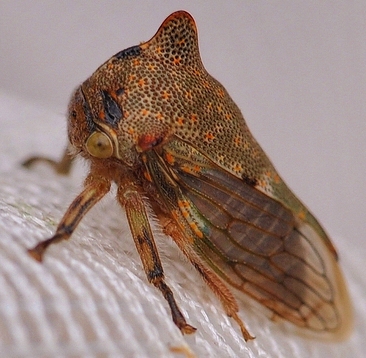 Platycotis vittata has a broad range across North America, distributed somewhat like a horseshoe (as described in BugGuide) along the east and west coasts and across the southern states. it is also found in Mexico and Brazil. Various species of oak, (Quercus spp) serve as hosts. They rarely are in numbers great enough to be a pest. They have five nymphal instars and there are observations of adult females standing guard over colonies of these nymphs, repelling predators. I love that mental image! We have only seen this one small individual, but I plan on searching the oak branches this spring to find more, especially if there are some of the striped stage. The other oddity is that some have a horn, and some don't. Whack, eh? Many of the photographs of this species were of that brightly coloured form or lifestage so when we we went to try and identify what we thought was a distinctly coloured and shaped treehopper we were flummoxed. Help from Syd Cannings and Karen Needham led us here. This fungus is a by product of our quest for garlic self-sufficiency. Last October we heavily augmented the soil in our garlic bed with horse manure from one of the local stables, and over the last couple of weeks the enriched ground has produced a fine crop of Common Dung Cups (Peziza vesiculosa). It is a common mushroom of stables and heavily manured gardens. It is a large fungus, as far as cup fungi go, up to 10 cm across. Ours are a dark tan, but the species in general varies from a light buff to brown.
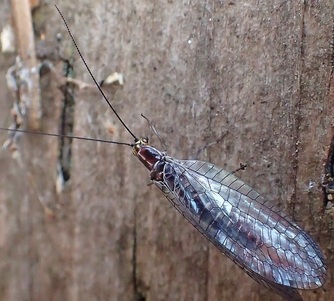 We caught a glimpse of this shiny slender lacewing resting after on one of the fabulously warm March days that we have been having. And although it isn't green in colour, it is a member of the Chrysopidae, or green lacewings. The more common ones are the filmy pale green, clear winged Chrysops sp that are often seen around lights and that can be purchased as part of an integrated pest control program. The larvae are voracious predators of a wide variety soft bodied pests, particularly aphids. One description of the larvae are that they look like tiny alligators. The adults hove into honeydew, pollen or nectar. A bit like growing up in Alberta and moving to the west coast as an adult. I am making a guess that this coastal species, Nothochrysa californica, has similar feeding habits. In Canada it has been recorded from Bowser, Nanaimo, Sidney, South Pender Island, Vancouver, and Victoria and is listed in Geoff Scudder's 1996 priorities for inventory and research in British Columbia. This species was also reviewed as a candidate for federal listing as threatened or endangered in California where it lives in the San Francisco Bay area. Red Alder (Alnus rubra )is a quickly growing tree of moist sites, often along water courses and particularly of disturbed soils. Our few alders are on the side of our property that was an old road right of way and undoubtedly was established on the road edge shortly after the road was abandoned.
Alders have two types of catkins (shown here). The long pendulous catkins are pollen producing and the rounded dark brown ones, which look similar to the cones on a conifer are the seed bearing ones. Alder seed is borne profusely, and they have two small wings on either side of the flat seed- which help them disperse in the wind. Alder seed is a favourite of Pine Siskins however, and flocks of Siskins l. They are useful trees from a bird point of view, often they have heavy cateripillar loads and that makes them a good foraging area for songbirds looking for food for nestlings. Rather embarrassingly, it was finding the Common Emerald (#142) that made us go look and see if we had Red Alders on the property this summer. 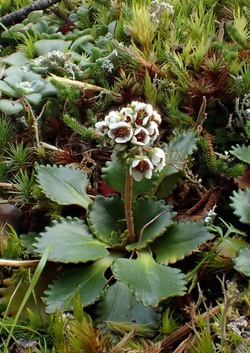 I learned this plant as Saxifraga occidentalis ssp rufidula, however a number of years ago S. occidentails was split into a number of species and this became S. rufidula, then even more recently the genus Saxifraga was split and this became Micranthes rufidula. Leah photographed this today, a very early flowering date for this species, again a testament to the very mild spring. It grows in seasonally moist moist areas, often in mossy seeps over bedrock on rock outcrops. Specimens growing on slighty deeper pockets of soil can be considerably larger that the one shown here. This plant, like many of the species found here at Leaning Oaks I first learned taking a course on plant ecology at the University of Victoria, taught by Dr. M.A.M. Bell. Marc is celebrating his 80th birthday today and we are dedicating this Species a Day to him. 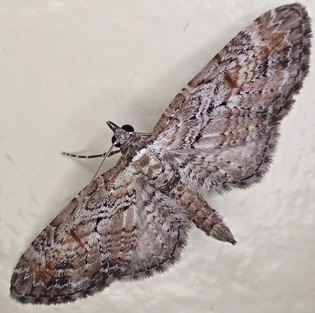 Pugs are a very, very large group of Geometrid moths. Called Pugs, because the hindwings are stubby (pug-winged), the overall effect is the "soaring hawk" look that you can see in the photo here. Pugs are a notoriously difficult group of moths to identify; except apparently Eupithecia graefii. The person that confirmed this on Bug Guide mentioned the "red/brown distal spot" as a diagnostic feature. The Victoria Natural History Society expert, Jeremy Tatum concurred with this identification. Edward Graef was an entomologist from Brooklyn, NY that was very active in taxonomy and collecting in the late 1800's. The larvae of E. graefii feed on arbutus and manzanita and is relatively common along the west coast of North America. Most sightings and specimen collections of adults are from late April through the summer. That this one was out on February 15th speaks to the incredibly mild weather that we have been having. 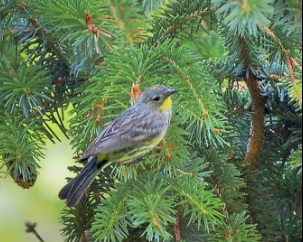 Yellow-rumped Warblers are found here at Leaning Oaks in the spring and early summer and then essentially disappear for a month and then make an appearance on fall migration from mid-August until the end of September. They may well be here, only silent in the canopies of the Douglas-fir or perhaps they move up in elevation during those months. The Yellow-rumped Warbler has two distinct colour forms that used to be considered separate species: the "Myrtle" Warbler of the east and "Audubon’s" Warbler of the mountainous West. The Audubon’s has a yellow throat; in the Myrtle subspecies the throat is white. Female Audubon's have less boldly marked faces, lacking the dark ear patches of the "Myrtle" Warbler. We get both forms on migration, but the form that lingers here to breed is the "Audubon's" form.  This lichen (Cladonia bellidiflora) is found in a wide variety of habitats over much of the temperate regions in both the northern and southern hemisphere. Here at Leaning Oaks it was photographed on dead wood, growing in the company of other mosses and lichens. A number of species of Cladonia have the bright red fruiting structures or apothecia. A British website decribes this species rather elegantly: "Non-fruiting podetia often tall, generally unbranched, gradually tapered, terminating in points or small cups with red pycnidia, podetial surface clothed in densely layered, blue-green or yellow-green, palmately incised squamules that peel upwards and which diminish evenly in size from base to tip of the podetium, soredia absent; apothecia bright red, on shorter and more irregularly tapered and squamulose podetia.......for reasons I cannot quite explain reminds me of Japanse Pagodas." 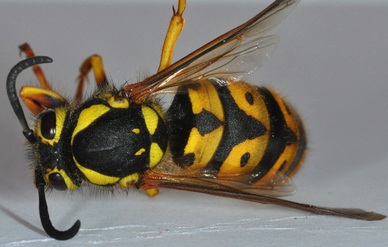 The Western yellowjacket queens overwinter and usually emerge March to April when they go to look for a new nest. Apparently they won't reuse a nest from a previous year. The warm weather of the past few weeks may have brought this one out early - she was found in a malaise trap that we have on the property. Western yellowjackets (Vespula pensylvanica) are social, underground nesters and as many know, they will repeatedly sting and and aggressively protect these nests. There are records of nests (not at Leaning Oaks!) that have over 2000 workers in one nest! They can become a nuisance on their up years when the larvae start to grow and they require copious quantities of protein for which they aggressively scavenge! You know what I mean - no piece of salmon goes untouched. In their quest for proteins they do feed on caterpillars, flies, aphids and scavenge on carcasses; so it is not all bad! The workers chew up the protein and feed the larvae the chewed up food. The adults will eat some of the liquids from these chewed up delicacies, but they mainly feed on plant nectar. As they do this, they are also aiding pollination - another reason to let them be when possible. The adults require carbohydrates to maintain their zippy life style; thus the sweets on the table or heading towards your mouth are targets. 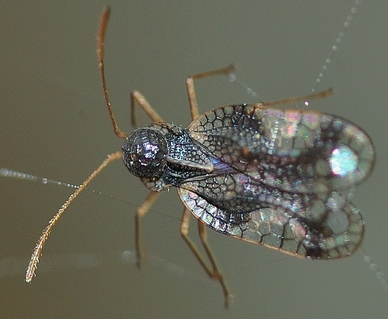 Stephanitis takeyai was introduced in eastern North America in 1946 from Japan and can be a serious pest in the nursery trade on Pieris japonica. The first record from BC was 2001 in Richmond on a P. japonica (Scudder 2004). This wee tingid was caught in a spider web, so we don't know what the host was on Leaning Oaks as we are Pierisless. We do have a few of the less common hosts, Rhododendron, Azalea and Salix. We will now be watching for yellowing and mottling on the upper side of the leaves, one sign that they are feeding on the underside. Apparently there can be four to five generations per year in Connecticut where there has been research done on this pest. I couldn't find anything on generation time for the population in the west. Scudder, G.. Heteroptera (Hemiptera: Prosorrhyncha) New to Canada. Part 2. Journal of the Entomological Society of British Columbia, North America, 101, 2004. Available at: <http://journal.entsocbc.ca/index.php/journal/article/view/76>. Date accessed: 13 Feb. 2015. 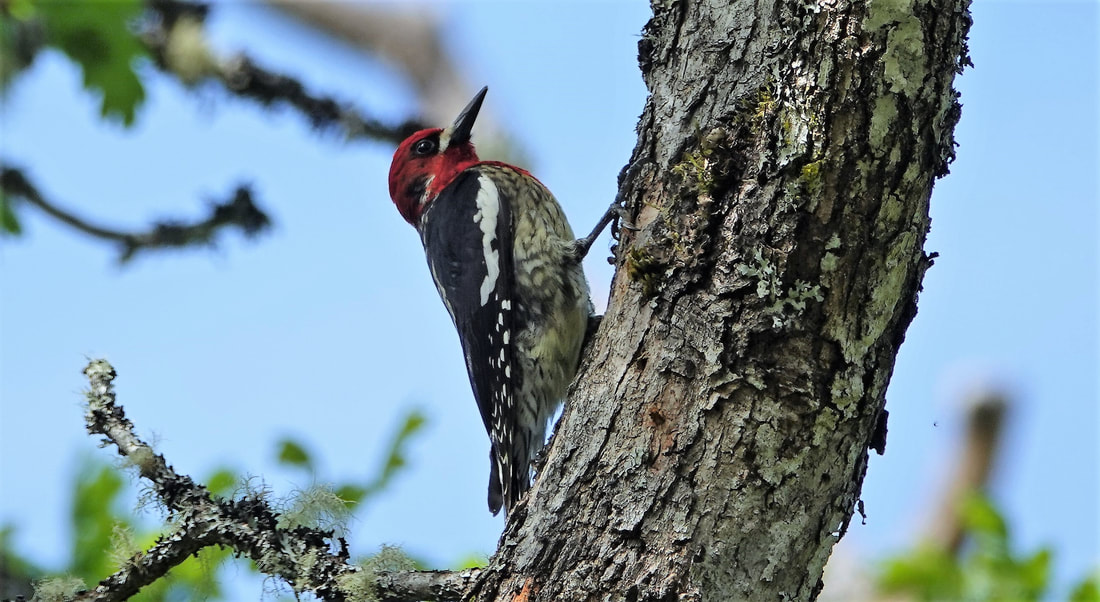 Most years, Red-breasted Sapsucker (Sphyrapicus ruber) is an occasional visitor to Leaning Oaks, but a few times over the years this species has been on the property for extended periods and over the breeding season. Sapsuckers (there are 4 species in BC) feed on tree sap that they harvest by drilling net arrays of holes through the bark and into the cambium of a tree. Here the tree of choice is Douglas-fir and one of our trees has an large area of sapsucker wells on the trunk about 8 m off the ground. The sap attracts insects, which are also used as food by the sapsucker. Some winters, especially those with pronounced cold snaps, we have an influx of Red-breasted Sapsuckers. These spunky little beetles are found through the winter in the moist undergrowth searching out decaying plant matter or animal tissue to scavenge. This individual was cleaning the last of the meat, fat and soft bits from a young deer that had died at Leaning Oaks. Necrophilus hydrophiloides and others of their ilk play a very important role by recycling the nutrients through the coastal forest from the Alaskan panhandle to California. And cleaning things up!
They are part of the Primitive Carrion Beetle family (Agyrtidae). They were once considered to be a subfamily of the Carrion Beetles (Silphidae). Look for the grooved elytra in the primatives to distinguish the families. |
AuthorsTwo biologists on a beautiful property armed with cameras, smart phones and a marginal knowledge of websites took up the challenge of documenting one species a day on that property. Join along! Posts and photographs by Leah Ramsay and David Fraser (unless otherwise stated); started January 1, 2014. Categories
All
Archives
May 2025
|
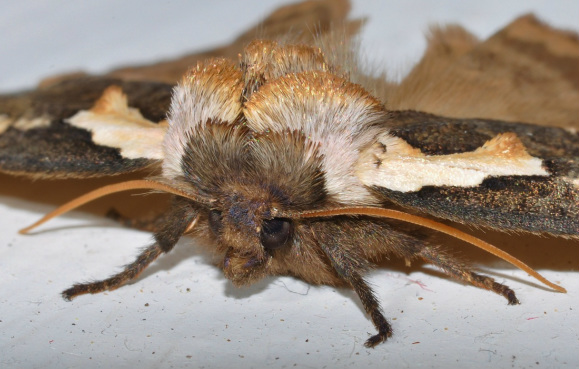
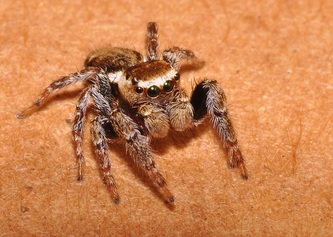
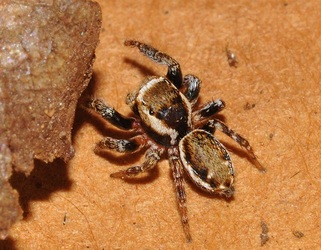
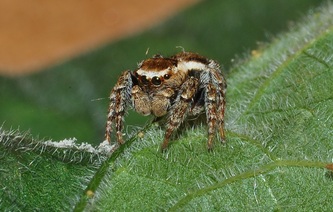
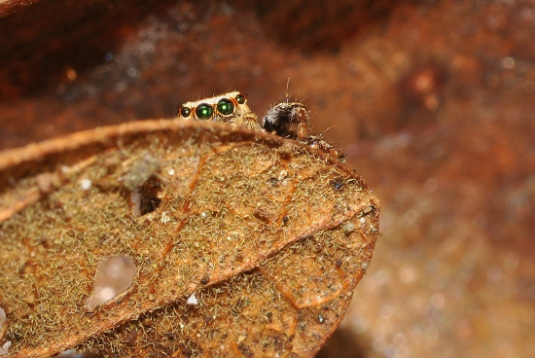
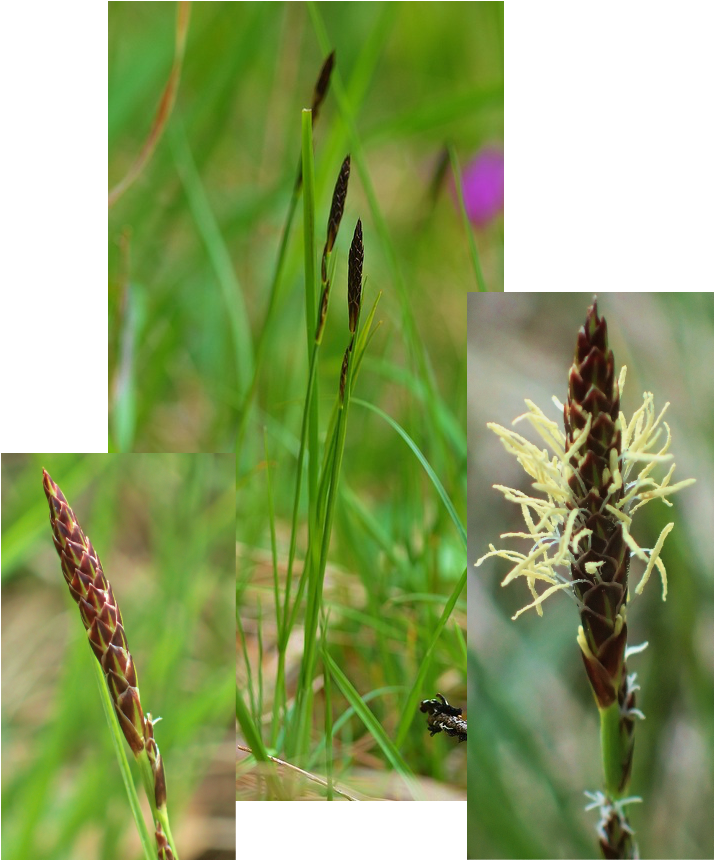
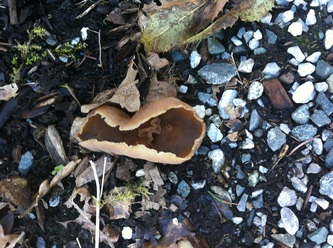
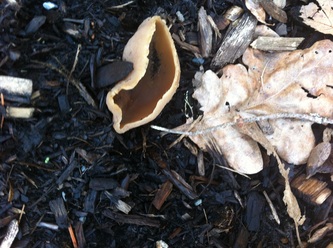
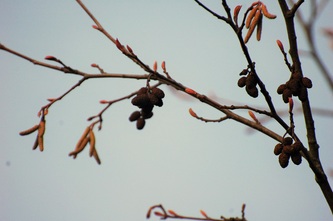
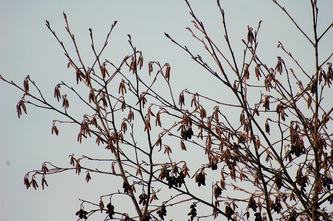
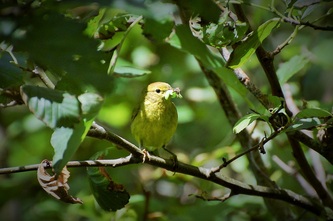
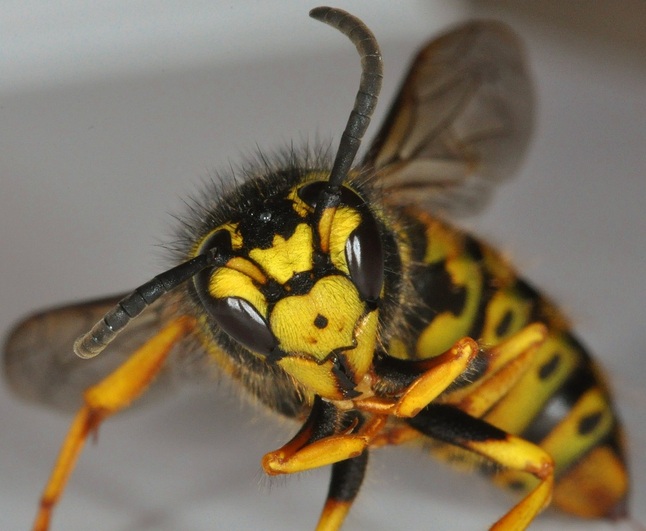

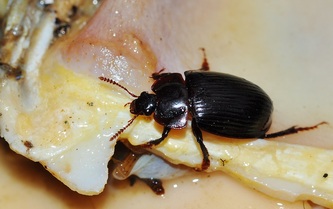
 RSS Feed
RSS Feed